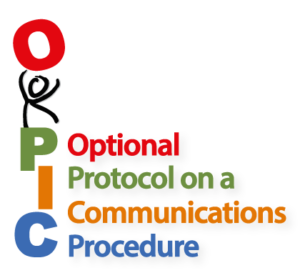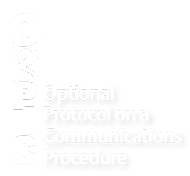 New tools to fostering the ratification of the OPIC
New tools to fostering the ratification of the OPIC
“While the CRC and its first two Optional Protocols have attracted high ratification rates, states appear to be more reticent about signing up to OPIC (…) Ratification [of the OPIC] opens the door to the access to justice for children (…)”
These are the words of CRC member Ann Skelton in the foreword of our recently released “OPIC Ratification Toolkit” publication, which shares concrete arguments and tools to advocate for the ratification of the Optional Protocol to the Convention on the Rights of the Child on a Communications Procedure (OPIC). Indeed, notwithstanding the OPIC’s importance and potential to better fulfil child rights at the national level, some numbers can seem quite worrisome when contrasted.
By October 2020, 46 states (20% of the CRC parties) have ratified the OPIC, in contrast to:
- 170 States (80% of the parties to the CRC) which have ratified the OPAC and
- 176 States (almost 90% of those parties to the CRC) which have ratified the OPSC.
It is noteworthy how the first two Optional Protocols to the CRC entered into force 12 years before the OPIC, thus states have had more time to ratify the instruments. However, at the current rate of ratification of the OPIC, it will take 20 years before 80% of states parties to the CRC ratify the instrument, and almost 30 years for all 196 states to be parties to the OPIC. Do children have that much time?
As shown in our OPIC ratification status interactive map, while some geographical regions have a large number of states parties to the OPIC, such as Europe (56%) and Latin America (24%), others have yet to give children access to this important redress mechanism for violations of their rights. How can we improve our advocacy for OPIC ratification?
The OPIC Ratification Toolkit publication: a key advocacy tool for OPIC ratification
The OPIC Ratification Toolkit publication explores some of the concerns and misconceptions that may be creating barriers to ratification, which might be useful for civil society organizations, NHRIs, states, parliamentarians and all relevant actors, to advocate for ratification within their countries.
- It provides a better understanding of the OPIC and what can be expected from it;
- It includes arguments for ratification that can be persuasive for states in advocacy strategies at domestic level;
- It includes concrete case studies of ratification experiences, as well as advocacy work being carried out at the national level for the ratification and implementation of the OPIC.
Children, as rights-holders, have the right to appeal to an international mechanism specific to them, if violations cannot be addressed effectively at national level. In that regard, the OPIC is not a burden for states, but another tool to help them better fulfil their human rights obligations under the substantive child rights treaties. This is the mainstream idea of the Ratification Toolkit. Hence, this publication intends to arm civil society with knowledge, strategies and capacities to show in their efforts how the OPIC interacts with the current international obligations of states and how it can improve the life of children – and the society in general- in their domestic environment.
Broader publication project for better understanding of the OPIC – OPIC Info Pack publication update!
The OPIC Ratification Toolkit publication is part of a broader Publication project to provide a better understanding of the OPIC, which includes the publication of our updated OPIC Info Pack. Initially published in 2014, the OPIC Info Pack publication provides civil society, NHRIs, children and anyone interested, with the basic information concerning the individual communications and inquiry procedure of the OPIC.
The national, regional, and universal ratification of the OPIC can only be achieved through joint efforts of all the key actors involved in the promotion and protection of child rights. To achieve those goals, more information is needed on the instrument, so it reaches key national actors that could make the ratification of the OPIC possible (this includes parliamentarians, NHRIs and civil society, including children). Our two new publications are Child Rights Connect’ contribution to that goal, which, among other, we believe can foster the achievement of children rights worldwide.
Find both publications in French and Spanish here. Please don’t hesitate to leave us your feedback! 🙂

